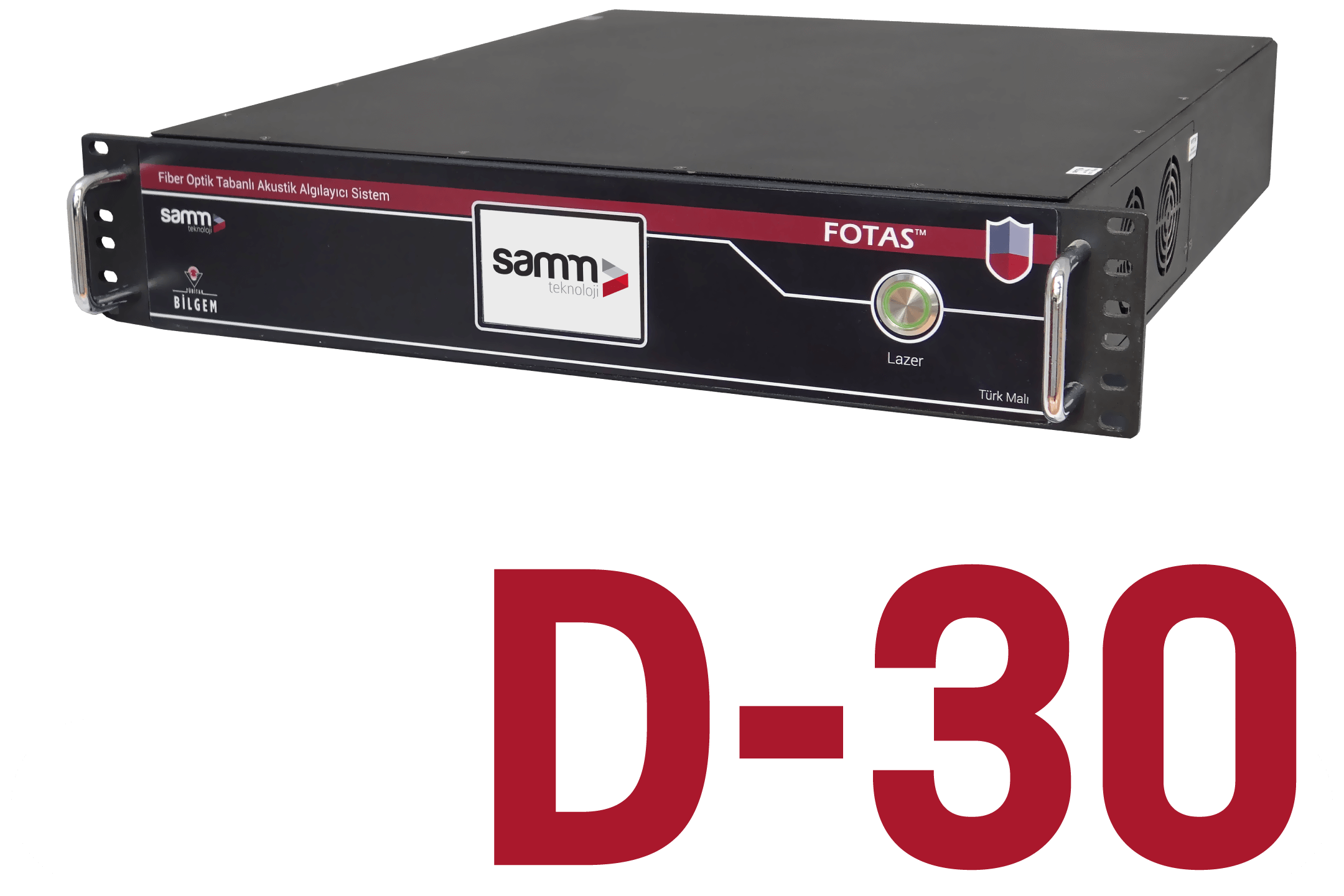Natural Gas Production Field - Case Study
Fiber Optic Acoustic Sensing Systems in Environmental Security
Project Description
This study examines how environmental security is provided using Fiber Optic Acoustic Sensing (FOTAS) systems in a critical natural
gas production field. The gas field is an area that must be carefully protected due to its geopolitical and economic importance,
making it a potential target for various threats. The critical nature of the project site necessitated an integrated security infrastructure
design.
During site inspections, it was noted that the facility was under construction, with installation ongoing and construction continuing
after the system’s setup. This posed significant challenges, particularly in terms of acoustic effects. The high level of site activity
required precise calibration of the detection system.


Technical Approach and System Selection
Based on site evaluations, the decision was made to use the FOTAS D-30 model. This model was chosen for its versatility and high
sensitivity. Key features of the FOTAS D-30 include:
- Redundant System: Provides continuous detection by offering redundancy against fiber optic cable breaks.
- Hybrid Operation Capability: The system offers a multi-layered security structure by being deployed both underground and on
the fence. - Wide Area Capacity: It can monitor and detect over a large area with minimal error margin.
The facility is surrounded by two rows of fence systems. For maximum security, fiber optic cables were applied to both fences and
embedded between the two fences. This solution created a three-tier detection structure, significantly increasing the likelihood of
detecting potential threats.
Genetec Integration and Operational Efficiency
The FOTAS system was integrated into the Genetec security infrastructure, ensuring effective security coordination across the facility.
Key features of the Genetec system and its integration are as follows:
- Data Integration: FOTAS worked in sync with data from other security systems (such as cameras, door control systems, etc.),
enhancing visibility and analytical capabilities. - Alarm Management: Alerts from acoustic sensors were combined with information from other sensors, classifying them to
minimize false alarms - Real-Time Threat Analysis: Potential threats were detected immediately and reported to security personnel. This provided
significant added value, especially in areas with high activity and difficult visual monitoring.
The integration of FOTAS into the Genetec system played a crucial role in detecting unauthorized access to the region and identifying
threats, significantly reducing the response time for security personnel.
Conclusion
This project clearly demonstrates the significant benefits of Fiber Optic Acoustic Sensing Systems in critical infrastructure security.
The superior detection capabilities of the FOTAS D-30, the three-tier security structure, and the operational efficiency provided by
Genetec integration ensured top-level environmental security for the facility. In particular, the system’s real-time detection and
detailed alarm management features reduced the workload of security personnel and allowed for quick and effective responses to
potential threats in the field



